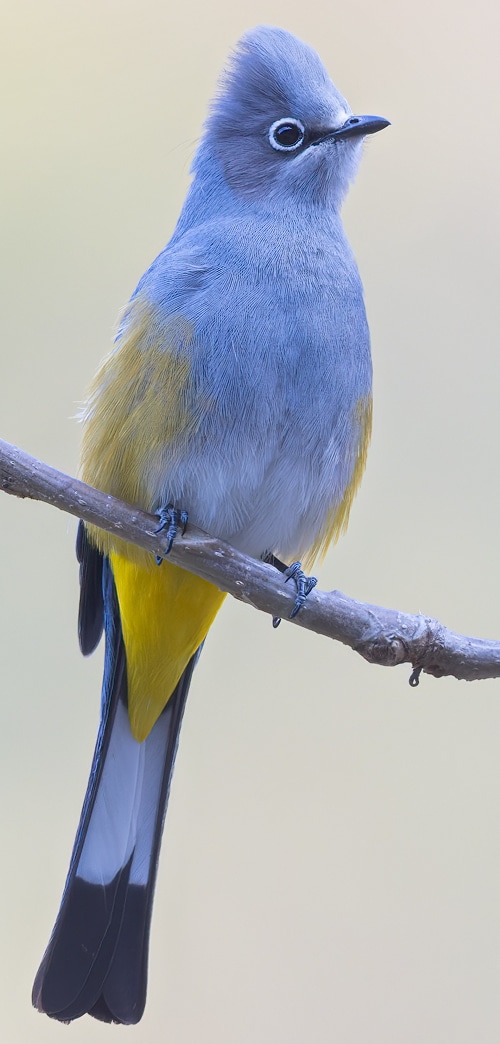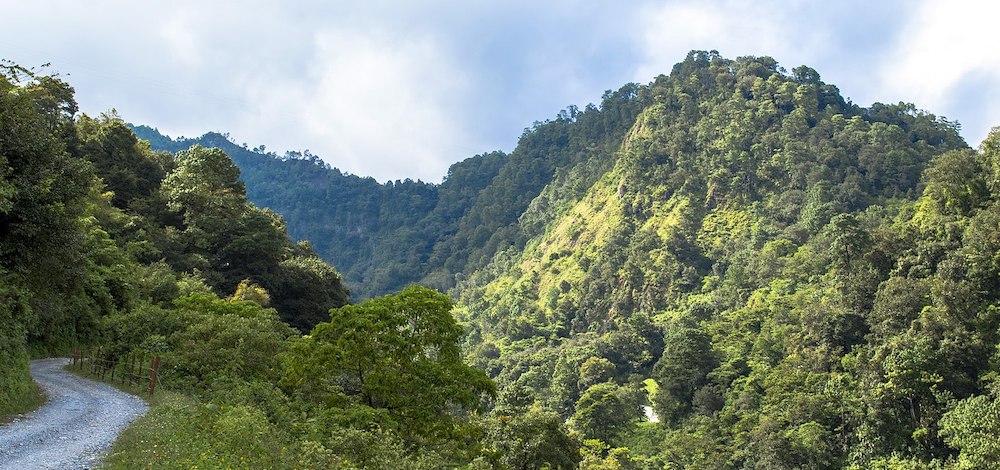Free and Sovereign State of Puebla

The state of Puebla is one of Mexico’s 32 states and one of its most fascinating regions. It is located in the southeast part of central Mexico, with Mexico City and Morelos to the west, Veracruz to the east, Oaxaca and Guerrero to the south, and Tlaxcala and Hidalgo to the north. It has a triangular shape with its narrow part to the north and covers just under 34,000 km2 with a population of around seven million people. Its capital and largest city is also called Puebla and the greater metropolitan area is home to half the population, 3,400,000 inhabitants.
The best way to describe Puebla is to say that it is diverse’. Snow-capped mountains are flanked by humid jungles, the driest of dry seasons give way to monsoon-like rains, and wealth and modernization coexist with poverty and antiquity. It is also a state that has agriculture at its heart with a high percentage of the population involved in farming or fishing.
Puebla is located in a transition zone between the temperate north and the tropical south. Warm fronts come up from the Gulf of Mexico to the east and the Pacific Ocean to the south, and clash with cold fronts coming down from the high plains of the Mexican Altiplano. Much of the state is dry during the winter and wet during the summer. Dominant vegetation types in Puebla include, among others; alpine meadows, pine forests, and oak forests on higher mountains; tropical deciduous forests (dry forest) and cactus scrublands (xeric scrubland) in middle elevations in southern Puebla; and montane cloud forests and tropical humid evergreen forests (rainforest) in lower elevations in northeast and southeast Puebla.

Chiconcuautla – ©Ric Gonzalez CC BY-SA 3.0 via Wikimedia Commons
Puebla has several large rivers, volcanic crater lakes, large seasonally wet lakes, and several large reservoirs. Most of the mountains of Puebla belong to the Sierra Madre Oriental and the Trans-Mexican Volcanic Belt. The first is locally called the Sierra Norte del Puebla, entering the state from the northwest and then breaks up into the smaller chains of Sierra de Zacapoaxtla, Sierra de Huauchinango, Sierra de Teziutlán, Sierra de Tetela de Ocampo, Sierra de Chignahuapan and Sierra de Zacatlán, although these names may vary among localities. It is home to four of the five tallest mountains in Mexico, including the tallest Pico de Orizaba (5,636 m), while also having regions with altitudes just barely above sea level.
Birding Puebla
Although mostly unknown outside of the state, the birds of Puebla – as well as the places to see them – are beautiful, numerous, and ‘must sees’.
The state of Puebla is home to at least 595 species of birds, approximately 54% of the species recorded in Mexico, and, due to continued studies, more are seen in Puebla every year. Only three states in Mexico have a higher diversity of bird species and each of these states includes coastal areas; Oaxaca, Veracruz and Chiapas. Puebla has several internationally designated Important Bird Areas, including the Valle de Tehuacán, Cuetzalan, La Malinche, Volcanes Iztaccihuatl – Popocatépetl, and the Sierra de Huautla.

Popocatépetl – ©Carlos Valenzuela, CC BY-SA 4.0 via Wikimedia Commons
This diversity of bird species is due to several factors. First, as mentioned above, the state has a variety of different ecosystems, each with different characteristic birds. Second, the state is located in an important migratory flyway through the centre of Mexico and each winter many migrant and transient species visit the region. And third, according to BirdLife International, Puebla forms part of three endemic bird areas; Balsas Region and Interior Oaxaca, Sierra Madre Occidental and Trans-Mexican Range, and Southern Sierra Madre Oriental. At least 55 species of birds found in the state are endemic to Mexico.
There are some excellent special birding places – some of which are listed below.
-
Cuetzalan Cloud Forest
Satellite ViewIn the beautiful cloud forests of Cuetzalan you will find unchanged pre-Hispanic cultures and colorful birds like the Violet Sabrewing, Collared Trogon, and Blue-crowned Motmot. -
Oriental Basin Lakes & Volcanoes
The volcanic crater lakes and the ephemeral lakes in the Oriental Basin offer some of the best chances to see shorebirds in central Mexico, including the Long-billed Curlew, American Avocet, Black-necked Stilt, and Snowy Plover. -
Paso de Cortés - Parque Nacional Izta-Popo
InformationSatellite ViewThe Paso de Cortés in Parque Nacional Izta-Popo where you can see one of the world’s most active volcanoes, see endemic species like the Red Warbler and Strickland's Woodpecker, and hear the eerie call of the Brown-backed Solitaire through a dense, central-Mexican pine forest. -
Reserva de la Biosfera Tehuacán Cuicatlán
InformationSatellite ViewThe Reserva de la Biosfera Tehuacán Cuicatlán is home to some of the most diverse and beautiful cactus forests in the world. You can also easily find endemic bird species like the West Mexican Chachalaca, Dusky Hummingbird, Gray-breasted Woodpecker, Boucard’s Wren, and Bridled Sparrow, as well as a large colony Military Macaws (on the Oaxaca side). -
UMAs - Sierra de Huautla
InformationThe UMAs (community tourism projects) in the Sierra de Huautla offer you a chance to see rare tropical deciduous forests, bird species from Mexico -
Valsequillo Reservoir
InformationSatellite ViewThe Valsequillo reservoir, located just south of the city of Puebla in the newly designated Parque Estatal Humedal de Valsequillo, fills with thousands of migrating waterfowl each winter, a phenomenon paralleled by few places in central Mexico.
-
Jajean Rose
| jajean.rose@gmail.com
PDF Birding in Puebla
-
Number of bird species: 707
(As at June 2024) - (Including at least 55 Mexican endemics)
-
Avibase
PDF ChecklistThis checklist includes all bird species found in Puebla , based on the best information available at this time. It is based on a wide variety of sources that I collated over many years. I am pleased to offer these checklists as a service to birdwatchers. If you find any error, please do not hesitate to report them.
-
Club de Observadores de Aves de Puebla
Facebook PageA Guide to the best places to see birds in the state of Puebla, with descriptions, photos, maps, directions, and bird lists from each site. - Una gu
-
BR Tehuacán-Cuicatlán
InformationSatellite ViewThe importance of Tehuacán-Cuicatlán lies in the great floristic diversity of the area. Contrary to what is popularly believed, the dry tropical regions that abound in southeastern Mexico are not poor in biological diversity. Among the vertebrates, 14 fish species, 83 reptile species (10% of the total of Mexico), 28 species of amphibians are estimated and up to now there is a record of 102 species of mammals, of which one third are bats. -
NP Izta-Popo Zoquiapan
InformationSatellite ViewThe park protects nearly 40,000 hectares (99,000 acres) surrounding Mexico's second- and third-highest peaks, the Popocatépetl and Iztaccíhuatl volcanoes, as well as the areas of the Hacienda de Zoquiapán and its annexed areas of Zoquiapan, Ixtlahuacán, and the Río Frío de Juárez river.
-
eBird
Sightings
-
2022 [01 January] - Mark Finn
Report...A short journey into the pine woods above Perote added Transvolcanic Jays and a pair of Red Crossbills whilst another area held Yellow-eyed Junco. The fog made birding and birdlife almost impossible so we headed to our traditional Mexican Inn for the night... -
2022 [04 April] - Hector Gomez de Silva
RepoEight days of birding and 285 bird species. This included 16 species of hummingbirds (one of which, unfortunately, was leader-only), 12 species of wrens (two of which were heard-only) and 31 species of warblers (two of which were heard-only). Also seen was some great scenery including a cactus forest similar to Arizona (but denser), central Mexico’s belt of high-rising volcanos and an abandoned shade coffee plantation on a limestone hill.
